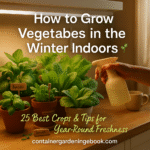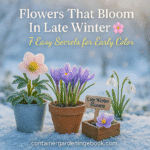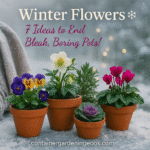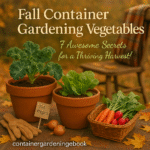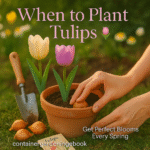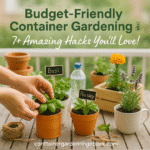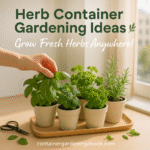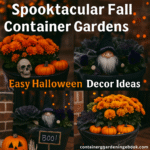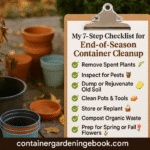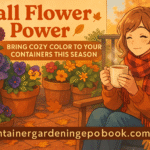How to Grow Vegetables in the Winter Indoors: 25 Best Crops & Tips
Disclosure: This post contains affiliate links. If you use these links to buy something, I may earn a commission at no extra cost to you. This helps support the blog and keeps the garden growing!
Introduction: The Garden Doesn’t Close… Continue reading
Flowers That Bloom In Late Winter: 7 Easy Secrets
Disclosure: This post contains affiliate links. If you use these links to buy something, I may earn a commission at no extra cost to you. This helps support the blog and keeps the garden growing!
I’m writing this from my… Continue reading
Winter Flowers: 7 Ideas to End Bleak, Boring Pots
Disclosure: This post contains affiliate links. If you use these links to buy something, I may earn a commission at no extra cost to you. This helps support the blog and keeps the garden growing!
Let’s be honest. It’s winter.… Continue reading
Fall Container Gardening Vegetables: 7 Awesome Secrets
When to Plant Tulips in Containers: 5 Secrets for Amazing Blooms
Affiliate Disclosure: This post contains affiliate links. If you purchase through these links, I may earn a small commission at no extra cost to you. I only recommend products that will add value to your gardening journey. I appreciate your… Continue reading
Budget-Friendly Container Gardening: 7+ Amazing Hacks!
Affiliate Disclosure: This post contains affiliate links. If you purchase through these links, I may earn a small commission at no extra cost to you. I only recommend products that will add value to your gardening journey. I appreciate… Continue reading
Herb Container Gardening Ideas: Grow Fresh Herbs Anywhere!
Affiliate Disclosure: This post contains affiliate links. If you purchase through these links, I may earn a small commission at no extra cost to you. I only recommend products that will add value to your gardening journey. I appreciate your… Continue reading
Spooktacular Fall Container Garden Ideas: Easy Halloween Decor Ideas
Affiliate Disclosure: This post contains affiliate links. If you purchase through these links, I may earn a small commission at no extra cost to you. I only recommend products that will add value to your gardening journey. I appreciate your… Continue reading
My 7-Step Checklist for End-of-Season Container Cleanup
Affiliate Disclosure: This post contains affiliate links. If you make a purchase through these links, I may earn a small commission at no extra cost to you. I only recommend products I believe will add value to your gardening… Continue reading
Fall Flowers Power: Brighten Your Landscape with These Late-Season Blooms
Affiliate Disclosure: This post contains affiliate links. If you make a purchase through these links, I may earn a small commission at no extra cost to you. I only recommend products I believe will add value to your gardening journey.… Continue reading
